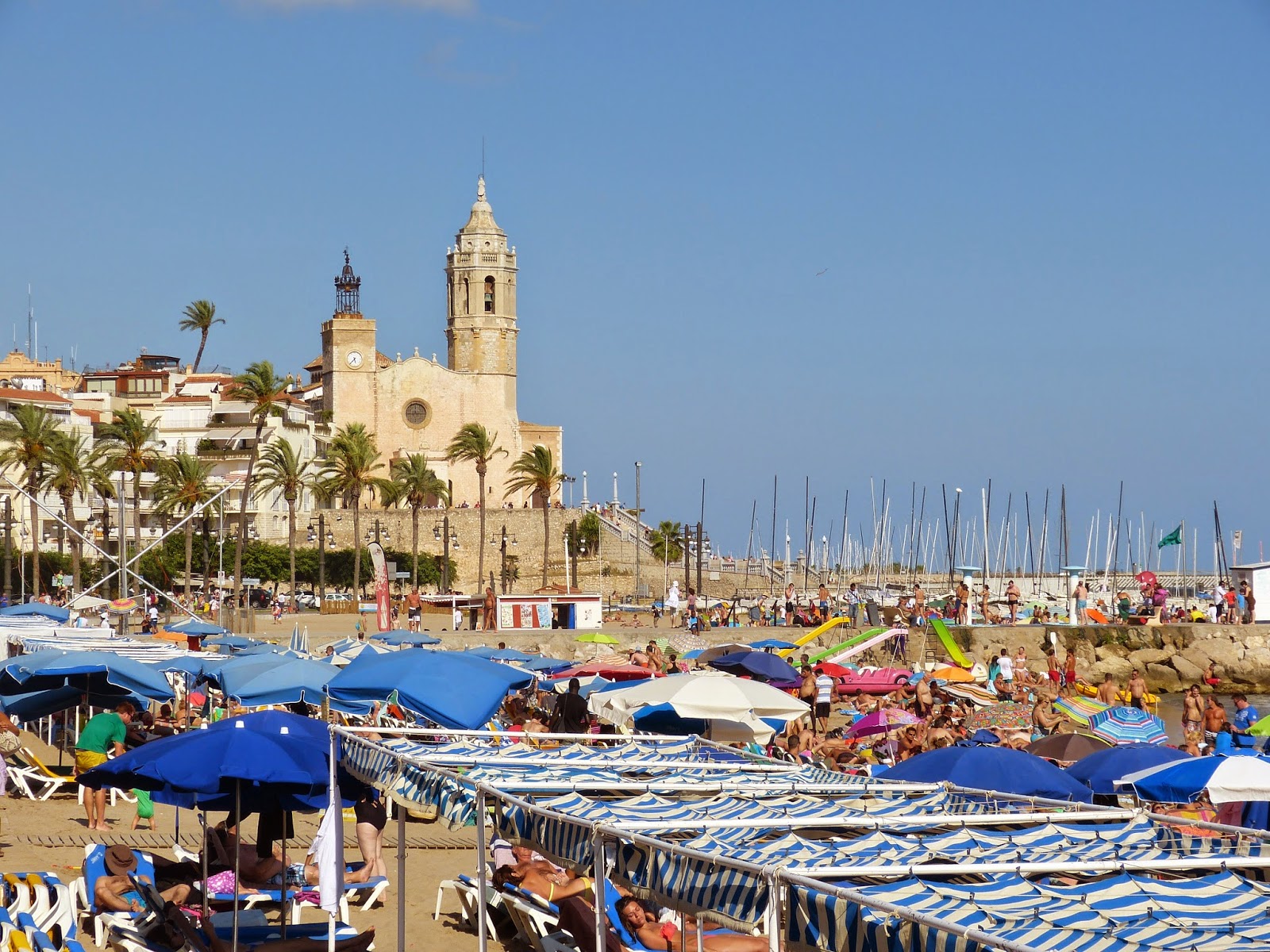Maybe some of you already know this, but I am obsessed with ruins: whenever I can, I try to explore towns that offer an insight into ancient civilizations. Two weeks ago I went to Tarragona, a town one hour away from Barcelona that hosts amazing Roman ruins. You can get there with the train or the bus, for about 8€ one way.
I didn't know what to expect to be honest. I found the city more touristic than I thought it would be, but there is a reason why tourists go to a certain place. Tarragona has an attractive historical centre that is really pleasant to explore even for those who are not thrilled by the sight of Roman ruins.
 |
| Entertainment in Tarragona |
The main attraction is of course the Roman amphitheatre, which boasts a great view over the sea. It must have been really thrilling to watch plays from this location. Nowadays, you can walk through the ruins of the theatre for an admission price, or admire the view from the gardens nearby. There are also other ruins to visit, like the "pretori", and they offer a good insight into the Roman settlement in Tarragona.
 |
| The amphitheatre of Tarragona |
Catalan identity is very much felt in Tarragona, perhaps even more than in Barcelona. I saw a monument dedicated to human pyramids, a tradition in this region, and countless Catalan flags.
 |
| A street sign in Tarragona |
Time for breakfast! In Tarragona I discovered ensaimada, a pastry typical of the island of Majorca, made with pork lard and topped with sugar. I can assure you that it is delicious!
 |
| My delicious ensaimada |
Tarragona is also full of cute squares where people congregate to have a caña (beer) or some tapas. Sometimes Roman ruins appear in the middle of the square. Don't miss the trompe l'oeil painted house in Plaça dels Sedassos. It was painted in 1995 in the building where painter Carles Arola had a studio.
 |
| Trompe-l'oeil painted house in Tarragona |
 |
| A detail of the house in Plaça dels Sedassos |
The cathedral of the town is also quite nice, and so is the seaside. It's that kind of town where you can wander aimlessly and just take pictures of different things, without bothering too much about tourist attractions.
 |
| A detail of the cathedral |
 |
| The seaside in Tarragona |
Sitges is a completely different kind of town. Mostly frequented by beachgoers, and famous for being a gay-friendly resort, it didn't impress me as much. There isn't a proper historical centre, so if you don't intend to go to the overcrowded beach, you're left with nothing much to do but buy an ice-cream. As a matter of fact, I had never seen so many ice cream shops one after the other, not even in Italy.
 |
| A view of Sitges |
 |
| A view of Sitges |
Even though Sitges had some cute corners, I didn't find it that interesting, and after about one hour I took the train back to Barcelona. If your main purpose for visiting is beach life, though, this could be your destination.
